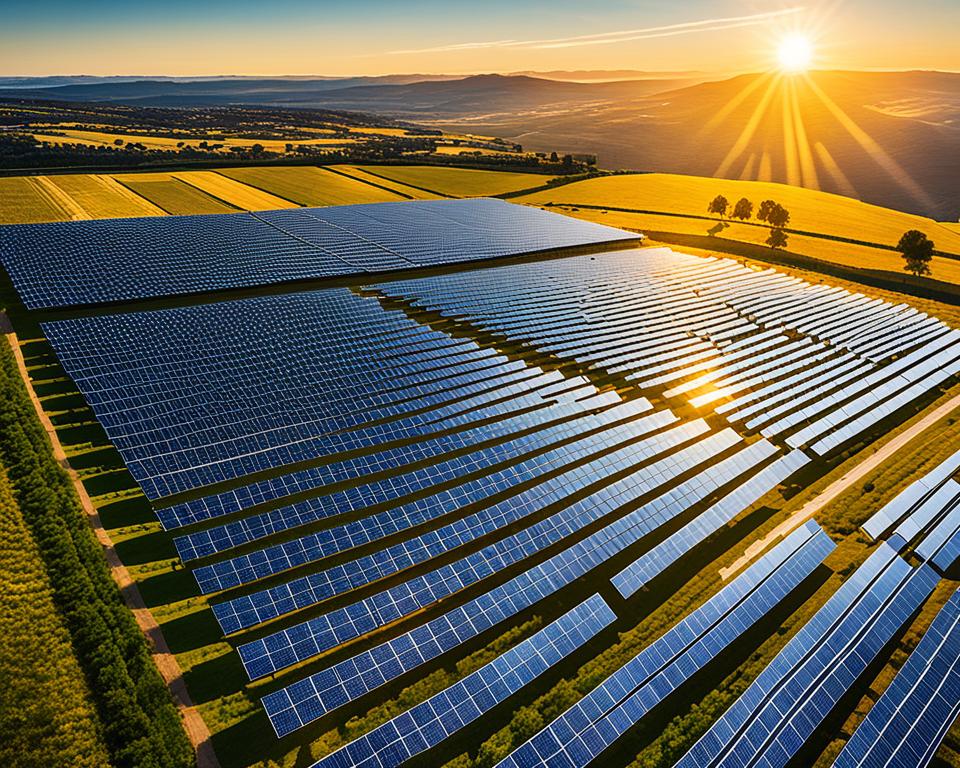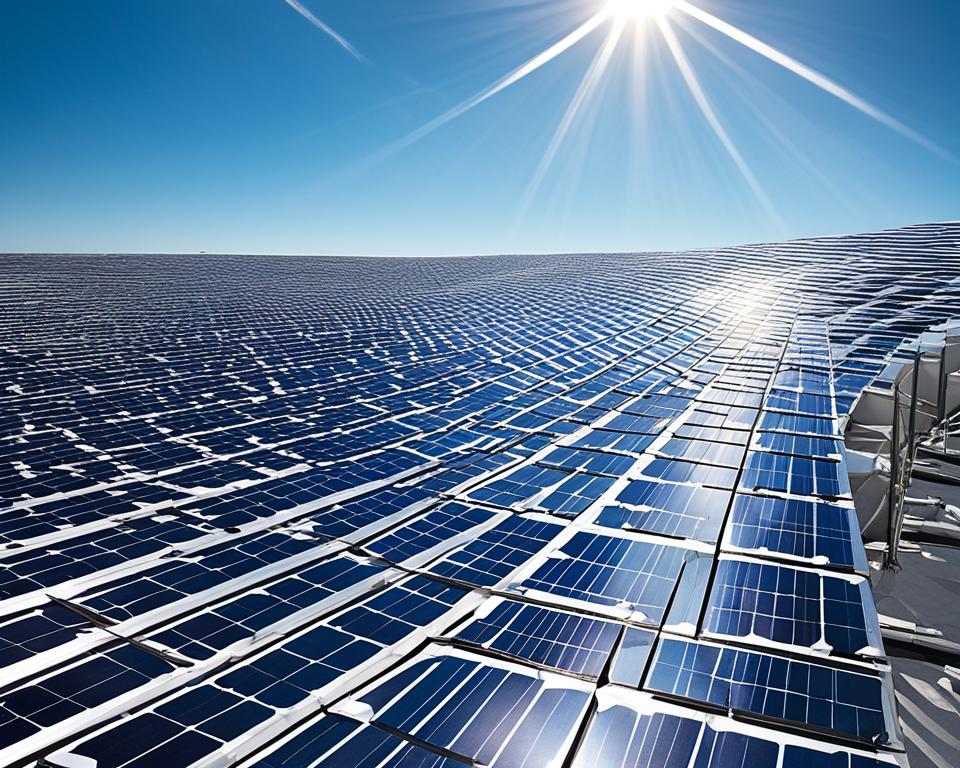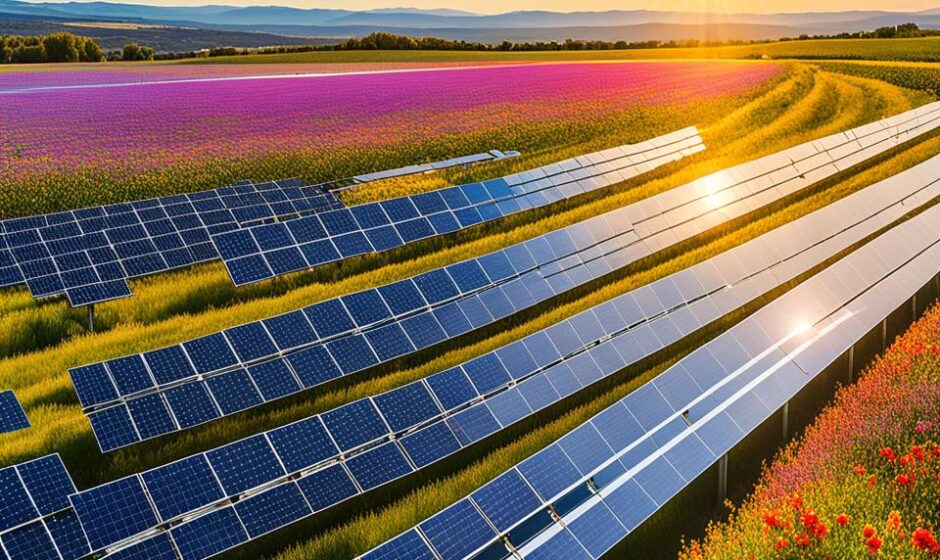According to a global PV outlook report from BloombergNEF, new solar installations reached 444 GW in 2023, surpassing previous forecasts. The report predicts that new installations could reach 574 GW in 2024, 627 GW in 2025, and 880 GW in 2030. This forecast diverges from other predictions, indicating the potential for significant growth in solar capacity in the coming years.
The rapid growth in solar capacity over the last decade has led to the challenge of accurately forecasting future growth rates. However, the report highlights the potential for negative feedback mechanisms and the need to consider factors such as pricing, storage, and changing demand. The forecasted growth in solar installations also has implications for achieving net-zero emissions and transitioning to sustainable power sources.
Key Takeaways:
- New solar installations are projected to exceed 2500 GW by 2030, according to a global PV outlook report from BloombergNEF.
- Solar capacity has experienced rapid growth in recent years, with installations reaching 444 GW in 2023.
- Forecasts indicate that new solar installations could reach 574 GW in 2024, 627 GW in 2025, and 880 GW in 2030.
- The potential for negative feedback mechanisms and factors such as pricing, storage, and changing demand must be considered when forecasting future solar growth rates.
- The growth in solar installations aligns with the goals of achieving net-zero emissions and transitioning to sustainable power sources.
Global PV Growth and Forecasts
BloombergNEF’s report reveals promising projections for the global photovoltaic (PV) industry, with projected solar installations reaching 627 GW in 2025 and an impressive 880 GW in 2030. As the clean energy sector continues to advance, PV technology stands at the forefront. The rapid growth in solar capacity over the last decade has transformed the energy landscape, fostering optimism for a sustainable and renewable future.
Accurately forecasting future growth rates, however, presents a challenge. The report emphasizes the need to account for various factors that influence PV installations, including pricing, storage capabilities, and changing global demands. Understanding the intricate interplay of these dynamics is crucial for accurate projections and ensuring long-term viability.
“Predicting future solar capacity is a complex task, as it is influenced by a myriad of factors,” explains Dr. Andrea Gerster, a senior analyst at BloombergNEF. “Careful consideration of evolving technologies, policy shifts, and market trends is necessary to effectively gauge the future growth potential of the PV industry.”
“The exponential growth in PV installations not only brings us closer to a clean energy future, but also holds significant implications for achieving net-zero emissions and transitioning to sustainable power sources,” adds Dr. Gerster.
As advancements in solar technology continue to drive down costs and increase efficiency, PV installations are becoming more accessible and economically viable across the globe. This shift towards sustainable power sources aligns with efforts to combat climate change, reduce carbon emissions, and promote energy independence.
Moreover, the potential for negative feedback mechanisms must be carefully examined. It’s essential to consider the influence of a potential saturation point and explore the balance between supply and demand.
Implications for the Future
- Acceleration towards achieving global renewable energy targets
- Enhanced energy security and reduced reliance on fossil fuels
- Expanded job opportunities and investments in the solar industry
- Improved affordability and affordability of clean energy
The positive projections for global PV installations signal a tremendous opportunity to harness the power of solar technology. As countries worldwide seek to transition to sustainable and clean energy, the growth and development of the PV industry are critical drivers in achieving these goals.

Major Solar Panel Manufacturing Investments
Waaree Energies, India’s largest solar panel manufacturer, is making a significant investment in the solar panel manufacturing industry. The company has plans to invest over $1 billion in a state-of-the-art solar panel assembly plant in Texas, USA.
The facility, expected to be operational by the fourth quarter of 2024, will have a capacity of 3 GW for solar panel assembly. As Waaree Energies aims to meet the growing demand for clean energy, the facility will eventually scale up to 5 GW of annual solar panel manufacturing capacity by 2027.
One of the objectives of this manufacturing facility is to integrate silicon cell manufacturing, further enhancing the company’s production capabilities. By incorporating this technology on-site, Waaree Energies aims to streamline the manufacturing process and increase efficiency.
The establishment of this solar panel manufacturing plant has already attracted the attention of major players in the industry. SB Energy Global, a subsidiary of SoftBank Group, has signed a contract to purchase “multi-gigawatts” of Waaree modules over the next five years. This agreement showcases the confidence and trust in Waaree’s high-quality solar panels and will further strengthen the company’s position in the market.

The investment by Waaree Energies in solar panel manufacturing aligns with the increasing global demand for green energy and the goal of achieving a net-zero carbon footprint. By expanding manufacturing capabilities and reducing reliance on overseas sources, Waaree is contributing to the growth of the green energy sector and supporting the transition to a sustainable future.
China’s Renewable Energy Outlook
China’s total electricity capacity is projected to increase by 12% in 2024, reaching a cumulative total of 3.25 TW. Non-fossil fuel sources, including renewables, are expected to account for 57% of China’s total power capacity by the end of the year, with wind and solar contributing significantly.
The forecasted joint capacity of over 1.3 TW of wind and solar combined is set to exceed China’s target of 1.2 TW from these sources by the end of the decade. This growth in renewables comes as China’s electricity demand is projected to increase, demonstrating the country’s commitment to transitioning to sustainable power sources.
China’s investment in renewable energy aligns with its goals in achieving a cleaner and more sustainable future. By prioritizing solar photovoltaic (PV) and wind power, China aims to reduce its reliance on fossil fuels and promote clean energy solutions. This commitment to renewable energy not only helps to reduce carbon emissions but also stimulates economic growth through the development of a thriving clean energy sector.
Through its extensive renewable energy initiatives, China is positioning itself as a global leader in clean energy. By embracing solar and wind power, China is taking significant steps towards achieving a net-zero future, contributing to the global effort to combat climate change and create a more sustainable planet.
FAQ
How much solar capacity is projected to be installed by 2030?
What is the potential growth in solar installations in the coming years?
What are some factors to consider when forecasting solar growth?
What is the significance of forecasting solar growth for achieving net-zero emissions?
What is the investment plan of Waaree Energies, India’s largest solar panel manufacturer?
FAQ
How much solar capacity is projected to be installed by 2030?
According to a global PV outlook report from BloombergNEF, new solar installations could reach 880 GW by 2030, surpassing previous forecasts.
What is the potential growth in solar installations in the coming years?
The report predicts that new installations could reach 574 GW in 2024 and 627 GW in 2025, indicating the potential for significant growth in solar capacity.
What are some factors to consider when forecasting solar growth?
The report highlights the potential for negative feedback mechanisms and the need to consider factors such as pricing, storage, and changing demand when forecasting solar growth.
What is the significance of forecasting solar growth for achieving net-zero emissions?
The rapid growth in solar installations and transitioning to sustainable power sources are crucial for achieving net-zero emissions and reducing reliance on fossil fuels.
What is the investment plan of Waaree Energies, India’s largest solar panel manufacturer?
Waaree Energies plans to invest over
FAQ
How much solar capacity is projected to be installed by 2030?
According to a global PV outlook report from BloombergNEF, new solar installations could reach 880 GW by 2030, surpassing previous forecasts.
What is the potential growth in solar installations in the coming years?
The report predicts that new installations could reach 574 GW in 2024 and 627 GW in 2025, indicating the potential for significant growth in solar capacity.
What are some factors to consider when forecasting solar growth?
The report highlights the potential for negative feedback mechanisms and the need to consider factors such as pricing, storage, and changing demand when forecasting solar growth.
What is the significance of forecasting solar growth for achieving net-zero emissions?
The rapid growth in solar installations and transitioning to sustainable power sources are crucial for achieving net-zero emissions and reducing reliance on fossil fuels.
What is the investment plan of Waaree Energies, India’s largest solar panel manufacturer?
Waaree Energies plans to invest over $1 billion in a 3 GW solar panel assembly plant in Texas, which will eventually scale to 5 GW of annual solar panel manufacturing capacity by 2027.
How does China’s total electricity capacity compare to its renewable energy capacity?
China’s total electricity capacity is projected to increase by 12% in 2024, reaching a cumulative total of 3.25 TW, with non-fossil fuel sources expected to account for 57%. Wind and solar are expected to play a significant role in achieving this.
What is the forecasted capacity of wind and solar combined in China?
The forecasted joint capacity of wind and solar in China is set to exceed 1.3 TW by the end of the decade, surpassing China’s target of 1.2 TW from these sources.
billion in a 3 GW solar panel assembly plant in Texas, which will eventually scale to 5 GW of annual solar panel manufacturing capacity by 2027.
How does China’s total electricity capacity compare to its renewable energy capacity?
China’s total electricity capacity is projected to increase by 12% in 2024, reaching a cumulative total of 3.25 TW, with non-fossil fuel sources expected to account for 57%. Wind and solar are expected to play a significant role in achieving this.
What is the forecasted capacity of wind and solar combined in China?
The forecasted joint capacity of wind and solar in China is set to exceed 1.3 TW by the end of the decade, surpassing China’s target of 1.2 TW from these sources.
